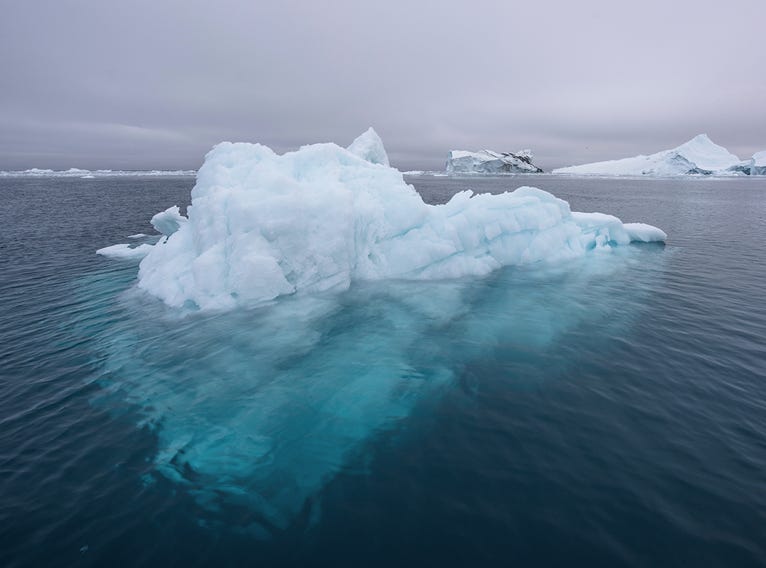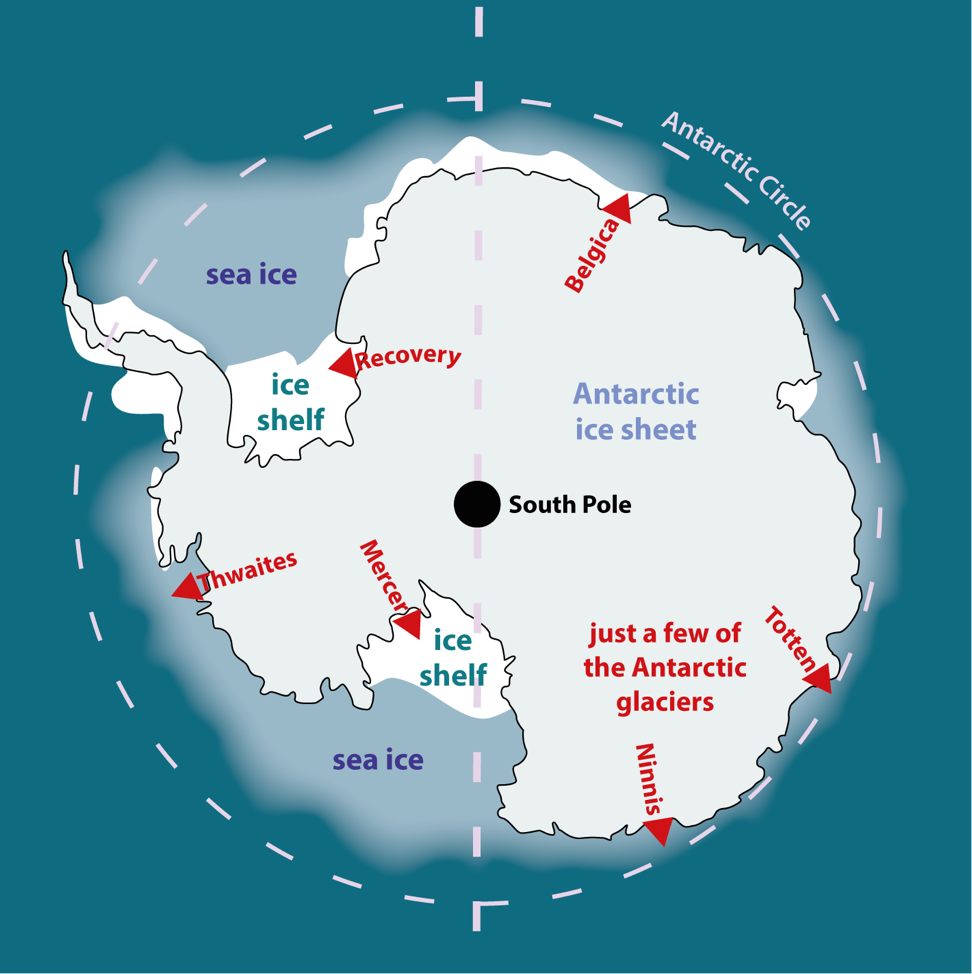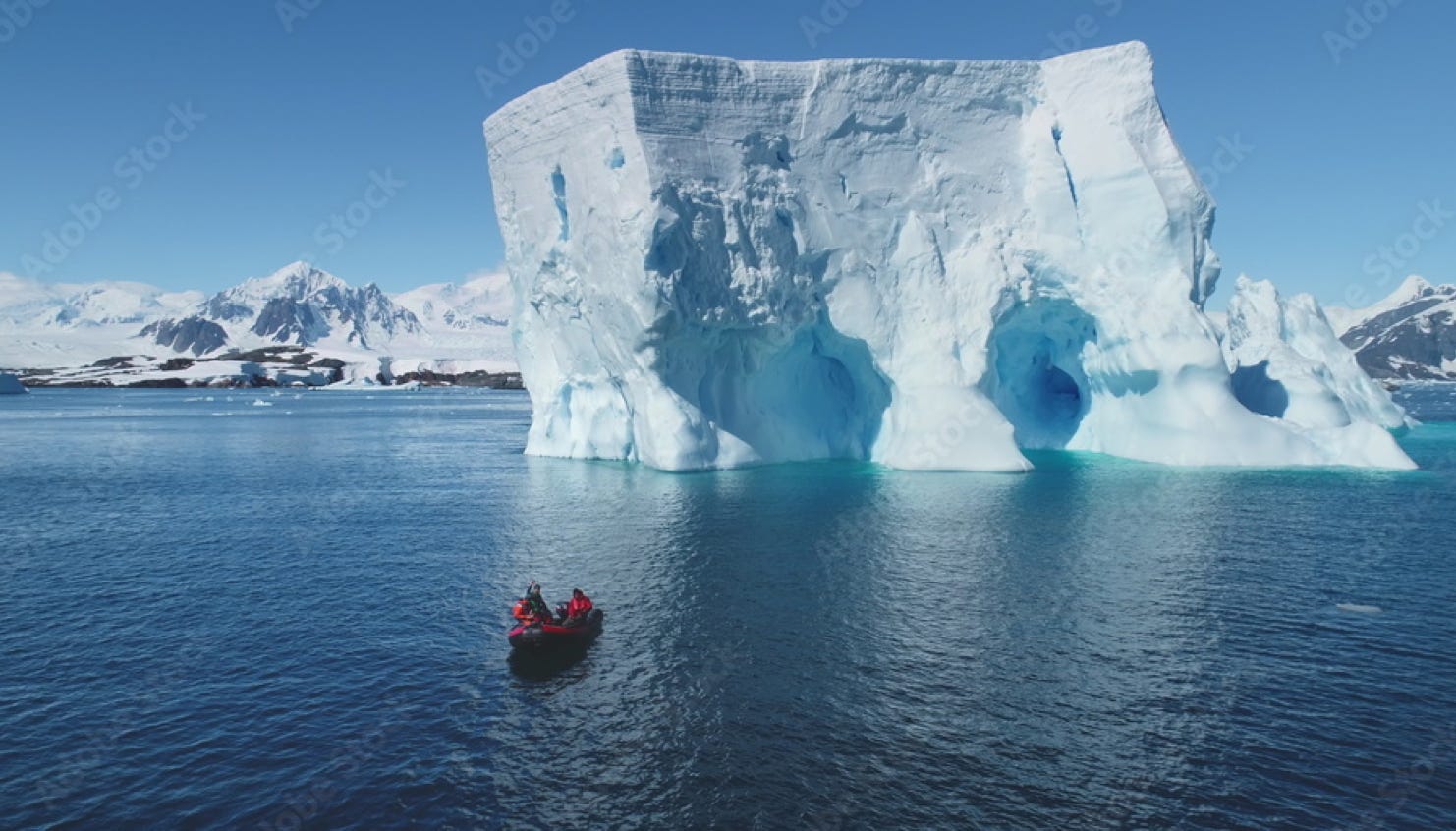
Connecting pre-university students with professional science
Contextual Curriculum Connections
A3 F = ma
in the context of iceberg motion
Iceberg formation is a natural process. The ice may come directly from glaciers – slow moving ‘rivers’ of ice, where they meet the sea. Or it may come from breakaway areas of ice shelf. Both of these processes happen more frequently now, due to global climate change.


Antarctic glaciers
The detail may be of more interest to Geography students, but there is a richness of information plus excellent images.
From the Newfoundland coast, Canada – not in the Antarctic of course, but providing an interesting introduction to the iceberg phenomenon.
Dramatic video of glacier calving, during which a huge area of ice breaks up into the sea, creating many icebergs of different sizes.
Newton formalised the concept of force, through three laws that are obeyed by nature. They are observed behaviours and are not derived from pure mathematics.
The first law links the concept with changes in velocity – without net force there can be no change in velocity, Δv = 0.
The second law brings in acceleration, which is rate of change of velocity.
acceleration = rate of change of velocity = Δv/Δt
Since the unit of change in velocity is the ms-1 and the unit of a matching change in time is the s, the unit of acceleration is ms-1s-1 usually written as ms-2 .

Why is it easier to accelerate a small boat than a huge glacier by the same amount?
Newton’s second law it leads to a clear statement about the effect of force – acceleration – and opposition to force, sometimes called inertia and measured as mass. The statement can be written as:
a = F / m
Written in this form it is relatively easy to see that force tends to increase acceleration but mass tends to decrease it.
However, the statement, or equation, is more commonly written as:
F = ma
According to Newton’s second law, the answer to the above question is … mass.
The equation F = ma is in agreement with Newton’s First law.
There cannot be acceleration without net (or unbalanced) force.
When there is net (or unbalanced) force there is always acceleration.
A video about changes to sea ice, emphatically blaming human greenhouse emissions.

Moving a long way north from the Antarctic, to the North Atlantic, the luxurious ocean liner, the Titanic, sank after a collision with an iceberg, in 1912. About 1500 people died, and roughly 700 were rescued.
The collision was probably not a direct hit, but the ice scraped along the side of the ship, ripping through metal.
The first thing we know, head-on or not, is that the two objects experienced equal and opposite forces. These forces would have been greatest in a direct hit.
We can work out the ratio of their maximum accelerations, using a = F/m.
aice = F / mice aship = F/mship
aship / aice = mice /mship
= 1.0 x 109 / 4.6 x 107
≈ 20
The maximum backwards acceleration of the ship was about 20 times bigger than the acceleration of the iceberg, Note that this is a ratio of accelerations. It has no units.
(C) David Brodie 2025 Note that all external videos and websites remain copyright of the creators
